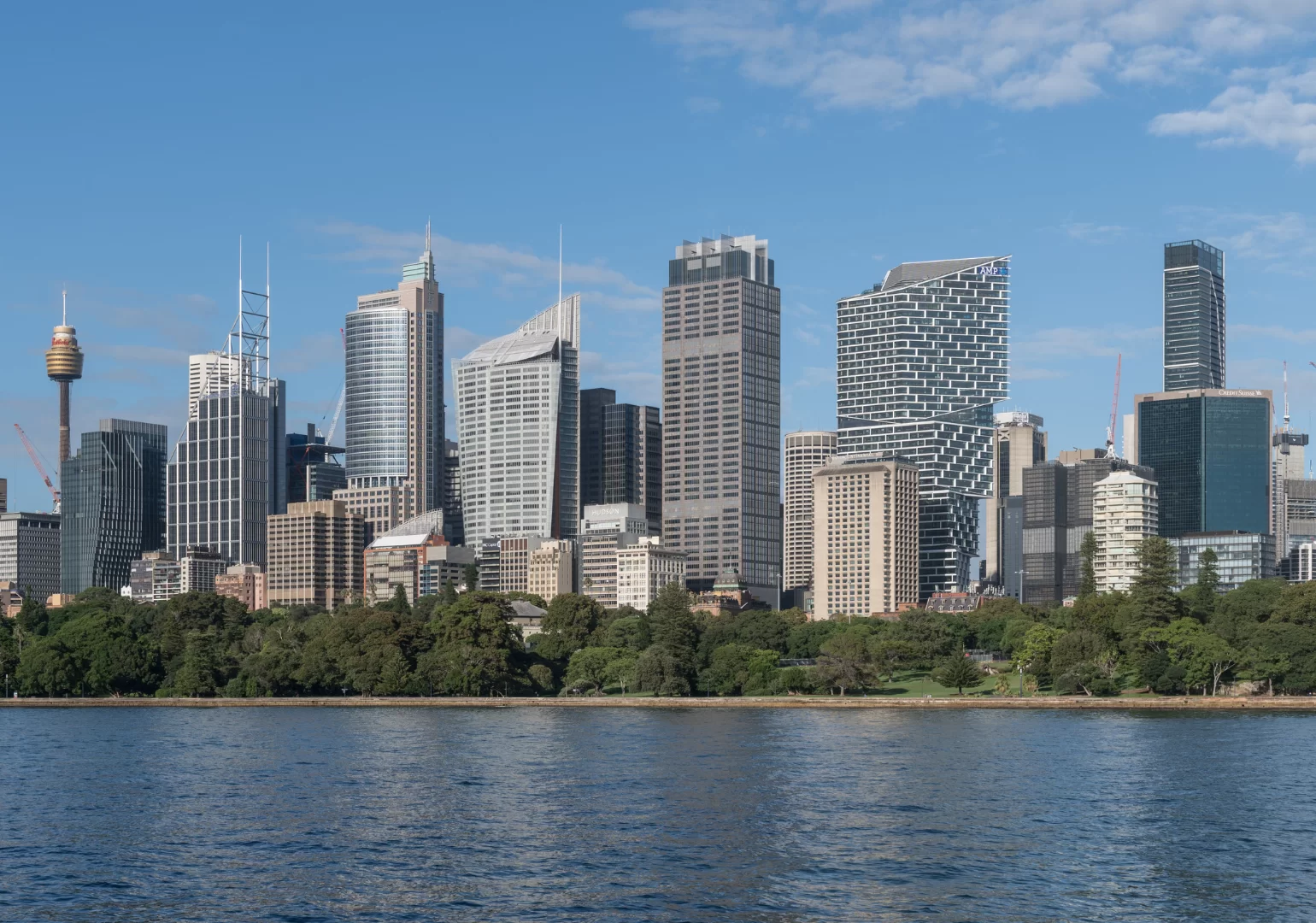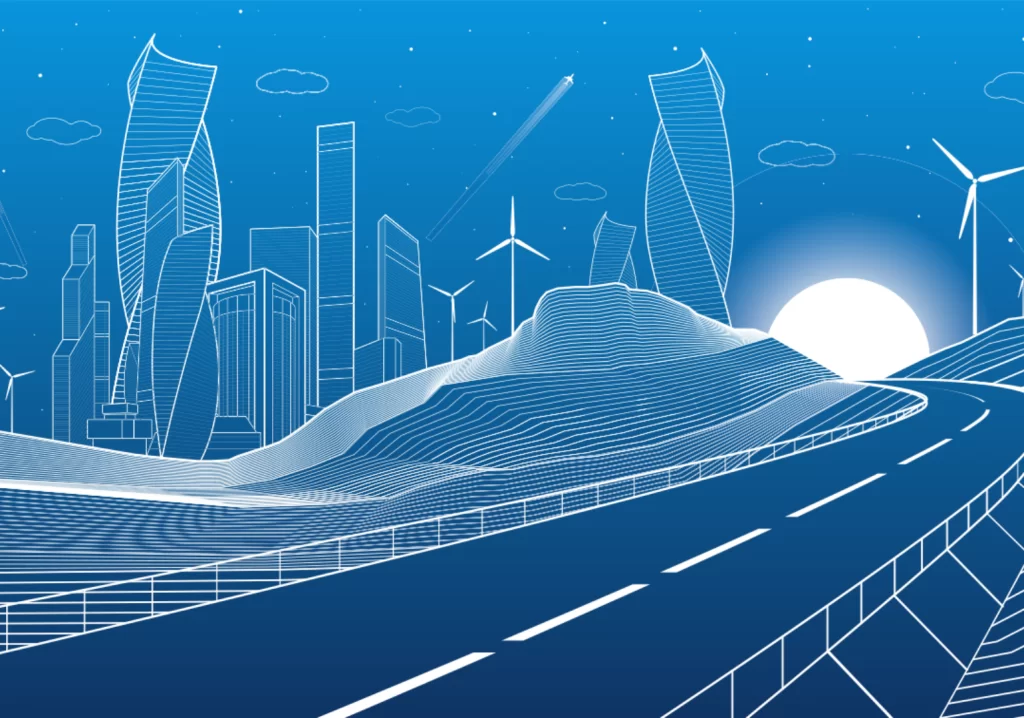Three experts answer the following hypothetical: If you were designing a greenfield major city, what would be a key strategy or design principle to minimise emissions and maximise sustainability?
This article was originally published in the August 2024 issue of create with the headline “Blue-sky thinking”.
Lucia Cade FIEAust
I imagine a new city designed around people and how they will experience living. A city that is safe. Where there is equitable access to work, health and education; safe water; clean environments and energy; and green parks and streets.

Infrastructure is a key enabler of the social wellbeing and economic growth that underpins that experience. Around 70 per cent of Australia’s greenhouse gas emissions are attributed to infrastructure across its life and in how it is used. The effort invested getting these strategic long-term assets right from the outset pays long-term dividends.
Urban planning in my city would support co-locating zones that lead to efficient infrastructure. This has a flywheel effect for decarbonisation and sustainability. For example, zoning industries using water and energy next to water and waste treatment plants producing water and energy.
In my city, urban planning would also focus on the community scale, not just the whole-of-city scale, because we know that community connection is important to long-term health and wellbeing.
I imagine a water-sensitive city that boasts green open spaces, street trees, urban food precincts, nature-based drainage and clean urban streams.
Houses and buildings would be designed using sustainable architecture principles and materials to enable whole-of-life benefits for energy, air flow, waste and light. These would be designed on a human scale, not too high and not too sparse, at a “gentle” density.
It would be a smart city, digitally interconnected and with equitable access for all; one with IoT, sensors, infrastructure that supports autonomous vehicle travel and visual imagery to support safety.

And transport would be effortlessly intermodal, supported by the smart city technology, making it easy to combine bus, train and tram public transport with riding and walking as well as driving.
These are all design principles and technology solutions that exist now – we just need to apply them. No need to wait. What is stopping us?
Lucia Cade FIEAust is an Independent Director at Infrastructure Victoria and Non-Executive Director at Urban Utilities (Qld) and Engineers Australia.
Dr Edmund Ang FIEAust CPEng
The key principles I would adopt in designing a greenfield major city would be circular economy and resilience, which work in tandem to achieve long-term sustainable outcomes. With a circular economy, I would establish a design philosophy ensuring we prioritise the reuse of existing materials, and that all key materials used in building are easily dismantled and can be continuously repurposed.
For instance, solar panels at the end of life must be able to be recycled, reused or repurposed – perhaps into aggregate for concrete mixes. When the structures incorporating those concrete mixes are demolished, it should be suitable as a recycled concrete for other usage: maybe modular bricks for home building or pavement.
This approach must be incentivised through sustainability or tax credits, or a simplified environmental approval process.
Separately, we must ensure our city design remains resilient in our pursuit of sustainability. Recent disasters from around the world, both natural and human-made, from wildfires to floods, have shown that a single disaster can undo decades of sustainability benefits. For a resilient design, we must think probabilistically – because one disaster that may seem improbable could undo years of emissions reduction.
Wildfires will continuously occur, and their consequences can be disproportionate. A study estimates the CO2 emissions from global wildfires equates to 10-20 per cent of fossil fuel emissions. To design for resilience, I would require overdesign in some cases, such as in fire protection, because this can reduce risk and consequences. In the long term, the additional resources consumed would still result in a net gain for sustainability.
For example, for cities in bushfire zones, recycled concrete, which has a lower strength but good fire properties, can be used as pavement or retaining walls doubling as fire breaks in parks.
Sustainability, only when designed with resilience in mind, can result in a legacy for generations to come.
Dr Edmund Ang FIEAust CPEng is a Technical Director of Strategic Engineering for ANZ at AECOM.
Dorina Pojani
Imagine stepping into a place where private automobiles are a relic of the past. Welcome to Pedalopolis, a city of about half a million inhabitants, designed from the ground up to be car-free. In Pedalopolis, the streets pulse with life. People walk, cycle and scoot. The city’s public transport backbone is a sleek, efficient network of electric trams and driverless shuttles.
These silent, pollution-free vehicles glide smoothly through green corridors, connecting all districts. At key transport hubs, you can hop off a tram and onto a shared e-bike or e-scooter, ensuring that your final destination is always within easy reach.
A fleet of e-taxis provides door-to-door travel for people with disabilities, elderly people and people travelling with young babies. No more traffic jams or stressful commutes – just smooth, effortless travel for all. Pedalopolis is a cyclist’s paradise: bicycles have priority on all streets, whereas motorised travel is limited to one or two dedicated lanes for taxis, shuttles, trams, emergency vehicles, waste collection trucks and delivery vans. Secure bike storage and charging and repair stations are conveniently located, so you can ride with peace of mind.
Instead of sprawling malls, in Pedalopolis you’ll find charming streets lined with small shops run by local artisans and merchants. Pedestrian plazas are filled with farmers markets, street performers and outdoor cafes. Community gardens provide additional fresh produce, reducing the need for long-distance transport.
Pedalopolis does not shun technology. Smart infrastructure ensures efficient energy use, with vehicles that adjust their electricity consumption based on real-time data. Waste is minimal, with comprehensive recycling and composting programs which further reduce travel demand.
The city’s digital ecosystem connects residents to services and amenities at the touch of a button, eliminating spurious travel. Pedalopolis combines ecology, convenience, beauty and wellbeing.
Dorina Pojani is Associate Professor of Urban Planning at the University of Queensland and author of Trophy cities: A feminist perspective on new capitals.
